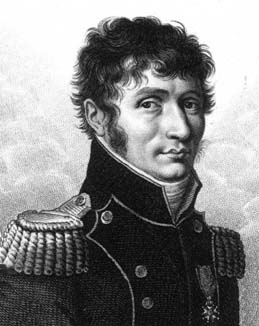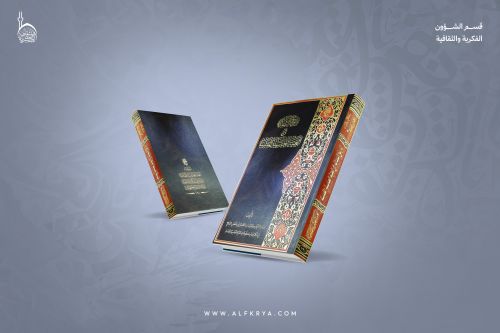

تاريخ الرياضيات

الاعداد و نظريتها

تاريخ التحليل

تار يخ الجبر

الهندسة و التبلوجي


الرياضيات في الحضارات المختلفة

العربية

اليونانية

البابلية

الصينية

المايا

المصرية

الهندية


الرياضيات المتقطعة

المنطق

اسس الرياضيات

فلسفة الرياضيات

مواضيع عامة في المنطق


الجبر

الجبر الخطي

الجبر المجرد

الجبر البولياني

مواضيع عامة في الجبر

الضبابية

نظرية المجموعات

نظرية الزمر

نظرية الحلقات والحقول

نظرية الاعداد

نظرية الفئات

حساب المتجهات

المتتاليات-المتسلسلات

المصفوفات و نظريتها

المثلثات


الهندسة

الهندسة المستوية

الهندسة غير المستوية

مواضيع عامة في الهندسة

التفاضل و التكامل


المعادلات التفاضلية و التكاملية

معادلات تفاضلية

معادلات تكاملية

مواضيع عامة في المعادلات


التحليل

التحليل العددي

التحليل العقدي

التحليل الدالي

مواضيع عامة في التحليل

التحليل الحقيقي

التبلوجيا

نظرية الالعاب

الاحتمالات و الاحصاء

نظرية التحكم

بحوث العمليات

نظرية الكم

الشفرات

الرياضيات التطبيقية

نظريات ومبرهنات


علماء الرياضيات

500AD

500-1499

1000to1499

1500to1599

1600to1649

1650to1699

1700to1749

1750to1779

1780to1799

1800to1819

1820to1829

1830to1839

1840to1849

1850to1859

1860to1864

1865to1869

1870to1874

1875to1879

1880to1884

1885to1889

1890to1894

1895to1899

1900to1904

1905to1909

1910to1914

1915to1919

1920to1924

1925to1929

1930to1939

1940to the present

علماء الرياضيات

الرياضيات في العلوم الاخرى

بحوث و اطاريح جامعية

هل تعلم

طرائق التدريس

الرياضيات العامة

نظرية البيان
Étienne Louis Malus
المؤلف:
K M Pedersen
المصدر:
Biography in Dictionary of Scientific Biography
الجزء والصفحة:
...
7-7-2016
521
Born: 23 July 1775 in Paris, France
Died: 24 February 1812 in Paris, France

Étienne Louis Malus's father was Louis Malus de Mitry and was Treasurer of France. Étienne Louis was first educated at home where he was instructed in literature and mathematics. He then attended the engineering school, École Royale de Genie, at Mézières. There he was taught by Monge who realised Malus had special mathematical talents. In 1793 Malus left the school, having been dismissed for political reasons.
On leaving Mézières, Malus joined the army and was posted to Dunkerque. There his abilities were noticed and he was sent to the École Polytechnique as a pupil. Here he was taught by Fourier, and he was perhaps the most able of all of Fourier's pupils. He was to remain associated with École Polytechnique as an examiner all his life.
While studying at the École Polytechnique Malus began to undertake original research, writing papers on the path of light through materials of differing refractive indices.
After graduating from the École Polytechnique Malus rejoined the army, this time taking part in campaigns on the Rhine in 1797. As an army engineer Malus was ordered to accompany Napoleon's invasion of Egypt in 1798. This did not greatly please him since at the time that he received the order he was stationed in the town of Giessen, as part of the occupying force, and he was about to marry the daughter of the Chancellor of the University of Giessen.
While in Cairo, Napoleon's fleet was destroyed in Aboukir Bay and Malus wrote, see [3],
From then on we realised that all our communications with Europe were broken. We began to lose hope of ever seeing our native land again.
At Napoleon's instigation, while they were in Cairo, the Cairo Institute was set up having 12 mathematical members. As well as Malus these included Monge, Fourier and Napoleon Bonaparte himself. After returning in 1801 Malus held posts in Antwerp, Strasbourg, and Paris.
His mathematical work was almost entirely concerned with the study of light. This involved him in studying geometrical systems called ray systems, closely connected to Plücker's line complexes. He conducted experiments to verify Huygens' theories of light and rewrote the theory in analytical form. His discovery of the polarisation of light by reflection was published in 1809 and his theory of double refraction of light in crystals in 1810.
In 1811 Malus served, along with Lagrange, Legendre, Laplace and Haüy, on the committee to decide on who to award the prize to for the best work on the propagation of heat in solid bodies. They awarded the prize to Fourier.
Malus received many honours for his work, in particular he was awarded a prize from the Académie des Sciences in 1810 for his memoir on double refraction. In the same year he was elected to the Académie des Sciences and the following year, despite the war between England and France, Malus was awarded the Rumford medal of the Royal Society of London.
- K M Pedersen, Biography in Dictionary of Scientific Biography (New York 1970-1990).
http://www.encyclopedia.com/doc/1G2-2830902794.html - Biography in Encyclopaedia Britannica.
http://www.britannica.com/eb/article-9050384/Etienne-Louis-Malus
Books:
- E L Malus, L'agenda de Malus. Souvenirs de l'expédition d'Egypte, 1798-1801 (Paris, 1892).
Articles:
- J B Biot, Etienne Louis Malus, Biographie universelle XXVI (Paris, 1820), 410-.
- J Z Buchwald, Experimental investigations of double refraction from Huygens to Malus, Arch. Hist. Exact Sci. 21 (4) (1979/80), 311-373.
- E Frankel, The search for a corpuscular theory of double refraction : Malus, Laplace and the prize competition of 1808, Centaurus 18 (1973/74), 223-245.
 الاكثر قراءة في 1750to1779
الاكثر قراءة في 1750to1779
 اخر الاخبار
اخر الاخبار
اخبار العتبة العباسية المقدسة

الآخبار الصحية















 قسم الشؤون الفكرية يصدر كتاباً يوثق تاريخ السدانة في العتبة العباسية المقدسة
قسم الشؤون الفكرية يصدر كتاباً يوثق تاريخ السدانة في العتبة العباسية المقدسة "المهمة".. إصدار قصصي يوثّق القصص الفائزة في مسابقة فتوى الدفاع المقدسة للقصة القصيرة
"المهمة".. إصدار قصصي يوثّق القصص الفائزة في مسابقة فتوى الدفاع المقدسة للقصة القصيرة (نوافذ).. إصدار أدبي يوثق القصص الفائزة في مسابقة الإمام العسكري (عليه السلام)
(نوافذ).. إصدار أدبي يوثق القصص الفائزة في مسابقة الإمام العسكري (عليه السلام)


















